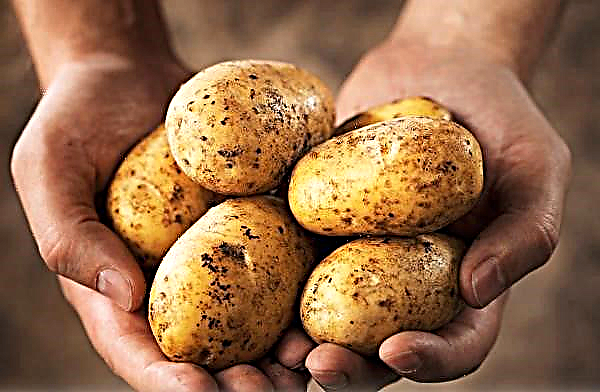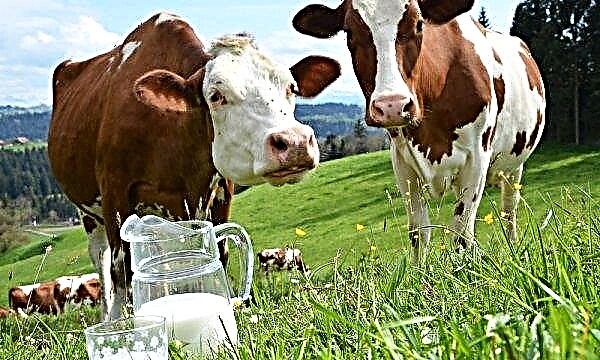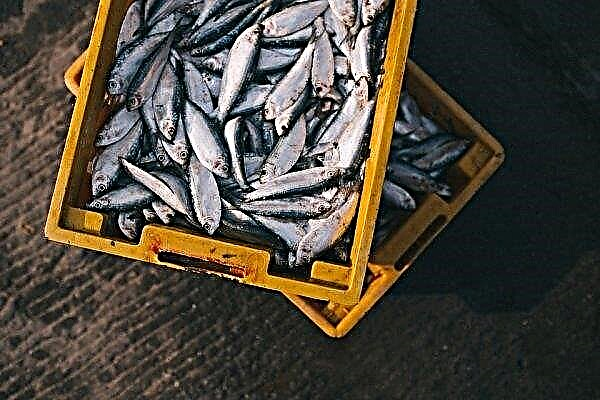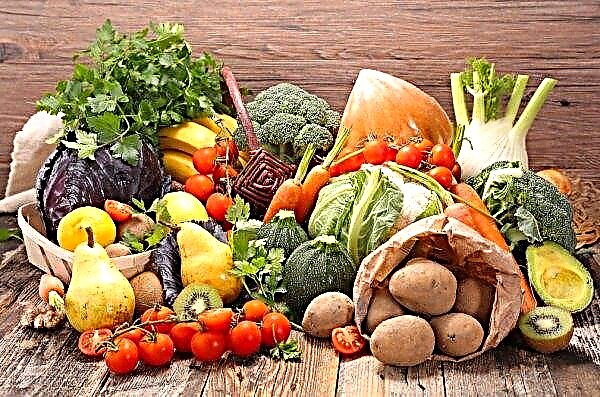Watermelon is a long-awaited summer culture. A huge amount of these fruits is consumed annually all over the world, because they quench thirst and taste good. In addition, watermelons are a good diuretic and help get rid of extra pounds, but in fact, the spectrum of beneficial effects of gourds is much wider. Find out more about how this fruit is useful and how to use it correctly.
Origin history
It is believed that the homeland of watermelon is South Africa. Here to this day, you can find a wild type of culture, a colocynt closely related to a modern plant. But according to genetic studies, it was suggested that the colocyntus and modern culture have a common ancestor, most likely Citrullus ecirrhosus (“tsamma melon”), which to this day grows in the Kalahari desert. Bedouins use it as a source of drinking water.
Did you know? The Russian word “watermelon” is borrowed from the Kipchak language and originates from the word “χarbuz”.
Watermelon composition
This fruit contains a significant amount of various substances. Their list determines its beneficial effect on the human body.

Vitamins
List of vitamins that are rich in the pulp of the fetus:
- nicotinic acid (B3) - 0.2 mg;
- beta-carotene (precursor of vitamin A) - 0.1 mg;
- retinol (A) - 17 mcg;
- thiamine (B1) - 0.04 mg;
- riboflavin (B2) - 0.06 mg;
- pyridoxine (B6) - 0.09 mg;
- folic acid (B9) - 8 mcg;
- ascorbic acid (C) - 7 mg;
- tocopherol (E) - 0.1 mg.
Minerals
Macronutrients contained in the culture:
- calcium - 14 mg;
- magnesium - 12 mg;
- sodium - 16 mg;
- potassium - 110 mg;
- phosphorus - 7 mg.
Among trace elements, only iron is present in the culture.
Useful properties of watermelon
Substances present in a huge berry allow using not only pulp for medical purposes, but also peel and seeds. In folk medicine, the fetus is applicable to normalize the functioning of the genitourinary and cardiovascular systems, with anemia, fevers and other ailments.

Kidney function improvement
The main advantage of watermelon over other cultures is that it does not contain a significant amount of acids and salts, but at the same time is rich in alkalis, which makes it an excellent choleretic agent. In addition, all alkaline compounds can improve kidney function.
Their activity is also enhanced by the presence of water and magnesium in the fetus: water makes the organs work more actively, and magnesium protects the body as a whole from the accumulation of salts, the formation of stones. Such an active cleansing process allows you to get rid of gallstone and urolithiasis, jade.
Important! The diuretic effect of watermelon can be a little inconvenient, as it often makes you use the toilet, especially women in a position who already have frequent urination.
Lowering blood pressure
Gourds contain the amino acid L-citrulline, which is inextricably linked to the amino acid L-arginine, without which the synthesis of nitric oxide in the body does not occur. She is involved in the regulation of vascular tone and blood pressure.

After the first amino acid enters the body, it instantly transforms into the second one - this is a significant plus, since for many, the use of L-arginine in its pure form causes nausea, upset stomach. Also, the fruit contains vitamins A, B6, C, which supports the activity of the heart and blood vessels.
Normalization of the cardiovascular system
Magnesium, iron, potassium present in the culture are very important for blood formation processes, for the normal functioning of the heart and blood vessels. In addition to them, fiber is present that stimulates the elimination of bad cholesterol. Ascorbic and folic acids help fight atherosclerosis and high blood sugar.
Important! You can not feed watermelon to children under 2 years old. At the age of 2-3 years, 80 may be present in the diet of the child–100 g of fruit per day. For children 4–6 years can be given 150 g per day.
Norms and basic rules for use
There are no special restrictions on the use of watermelon. It is combined with all food products, and the reception time can be any. But should not be abused. For an adult, the maximum daily intake is 500 g. If you want to sit on a watermelon diet, then you can eat a maximum of 1,500 grams per day, dividing this portion into several receptions.

Rules for the use of culture:
- Check the fetus for nitrates. To do this, grind the pulp and fill it with a glass of water: from a quality product, the water will cloudy, and from a poor-quality product it will turn red or pink.
- Do not consume the fruit if there are contraindications.
- Always wash your watermelon before eating.
- Do not buy a cut fruit to be sure that putrefactive processes have not begun in it.
- Do not eat the pulp to the very peel. It is better to leave 1-1.5 cm of the adjacent pulp, since it is in this layer that nitrates can be if they have already got inside.
Contraindications for eating berries
Those who have high acidity and have problems with the pancreas, it is better to abandon this summer treat. Due to the large amount of fiber, the pulp is not suitable for those who have gastrointestinal ailments in the acute form or inflammatory processes in the digestive system are observed. People with allergies should be extremely careful; for some, the amino acid L-citrulline may be dangerous.
As you can see, this gourd is very useful for our body. In addition to the diuretic effect, it has a beneficial effect on the cardiovascular system. A useful action, of course, is possible only if the product is of high quality, without nitrates, and eaten in moderation.












